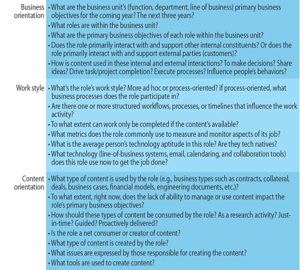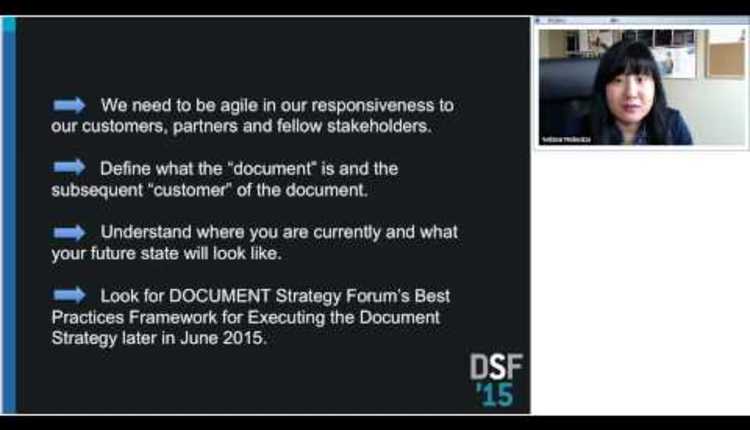Enhanced expectations for information access
have fundamentally transformed the enterprise content management (ECM) landscape
due to the rapid adoption of mobile devices and services. Today's document
management assumes a private corporate network with a controlled repository. But
tomorrow, it will take hold of the worldwide Internet with access to documents
stored in various cloud and on-premises locations.
While it's possible to frame content management from an infrastructure and
technology perspective—many companies do just that—it's better to define a
strategy to reflect your business contexts and tradeoffs in this time of
disruptive business and technical change. In Forrester's "Content Management
Playbook," my colleagues and I maintain that firms must build an ECM strategy that
includes three elements: your organization's business capabilities, your unique
workforce needs and the technology landscape. With this approach, your strategy
will not be affected by the ever-changing marketing of content management
tools; instead, your strategy will reflect how your firm wants to support
content to maximize profitability.
Take
a business context view instead of a technical view
Why do business and technology leaders invest in content management
initiatives? Primary drivers include the need to simplify infrastructure, comply
with regulatory requirements and improve process efficiency. Forrester has
found that the missing piece and root cause of most ECM woes is not tangible
needs but, instead, is a lack of understanding of business context—how people
and business processes consume, modify, process and output content.
When IT organizations force technology upon
employees without much knowledge of how the technology can benefit them,
employees often refuse to use it. To address this real issue, business leaders
must:
Understand
the business context. This step starts with documenting how and why employees create, consume and use
content. This use can focus on the tangible, such as the cost savings from
improving new account openings in retail financial services. However, numerous
intangibles can also define business context, such as the benefits associated
with helping people more quickly find documents as part of an activity or
improving how people collaborate on a document.
Find
the right people to ask. People in operational roles understand what makes a particular line of business
tick. With this knowledge also comes a good understanding of how better use of
content can help the organization achieve its objectives.
Ask
the right questions. Here is the challenge: How can you determine the business context for all of
the unstructured information within your company and not drown in a
requirements cycle?

To address this problem, Forrester has developed a list of
questions to help companies determine and develop the right approach.
Use business context to segment content use cases
While the content needs of different roles, lines of business and functions may
vary, they are not unique. By analyzing similarities across roles in terms of
business capabilities, ECM teams can develop a model that places different
roles into segments that share common characteristics.
Segments will differ based on industry and
organizational maturity, but typical segments that Forrester has identified
include:
- Transactional: Manages content for core business processes.
- Corporate services: Captures lighter ECM tools and requirements.
- Outreach: Organizes persuasive content applications.
- Advisory: Collaborates and leverages internal and external research.
Map technology based on business capabilities
When asked to look three years into the future and consider how great a change
they expect in various parts of their business, 31% of enterprise architects
expect either a "complete replacement" or "major or pervasive change" to their
content platforms. As if ECM alone wasn't complicated enough, several new
solutions are being incorporated into ECM strategies, such as dynamic case
management, file sharing and collaboration solutions and enterprise social
platforms. In order to remain competitive in the business landscape of the
future, business leaders must look forward and plan for not only ECM best
practices—but next practices—through a deep understanding of business context,
use cases and the next wave of technological innovation.
CRAIG LE CLAIR is a vice president and principal analyst at Forrester
Research, serving enterprise architecture professionals. For more,
visit www.forrester.com/Craig-Le-Clair.











